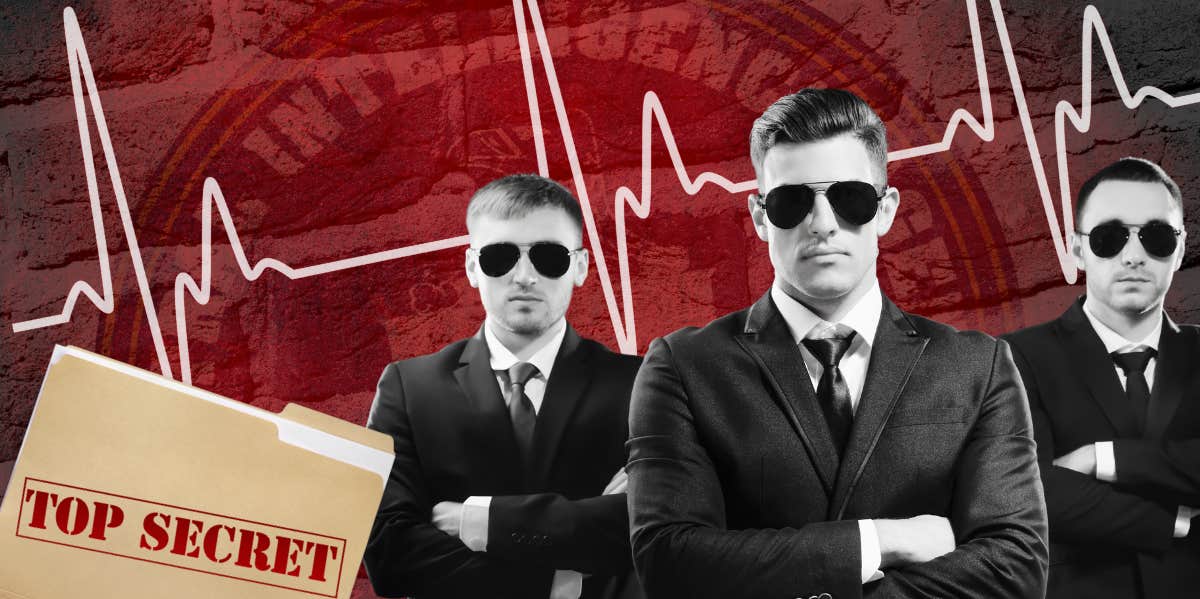The Terrifying Secret Weapon The CIA Created To Assassinate World Leaders
It the public hadn't demanded answers, the controversial secret weapon may have never come to light.
 Olivier Verriest / Getty Images, Billion Photos via Canva, MyImages - Micha, Africa Studio / Shutterstock
Olivier Verriest / Getty Images, Billion Photos via Canva, MyImages - Micha, Africa Studio / Shutterstock The United States Government has been the subject of many wild conspiracy theories — some logical, and others unbelievable.
Some of the confirmed theories were the use of mosquitos to experiment on citizens, the dark and depraved tale of body-snatching, the mind control experiment where the government used forced drug addiction on its own agents, and the use of cats to act as spies.
Another legend that is factual is the existence of a CIA heart attack gun.
Back in the day, what could and could not be done by intelligence agencies was a gray area, and pushing the boundaries of chemical and biological weapons was pretty common. In the 1950s, the CIA started its "heart attack gun" program to develop a secret weapon.
What is the heart attack gun?
The heart attack gun was invented during the Cold War and used poison darts made from frozen shellfish toxin. The gun could shoot a target from up to 100 meters away, and once the toxic material entered a person’s bloodstream it killed them within minutes.
Mary Embree, a CIA employee who had been promoted from secretary in a surveillance department to the Office of Technical Services, was ordered to find an undetectable poison and a shellfish toxin was the best option.
Embree had no idea that she had become part of Project MKNAOMI, a program committed to developing biological weapons to use in the Cold War.
What was the purpose of the heart attack gun?
The heart attack gun was intended to allow human beings who were part of adversarial countries to be killed and the government to get away with it. Specifically, it was to be used on Cuban leader, Fidel Castro, who had survived many assassination attempts.
The plan was to fire a projectile out of a Colt M1911 gun that had been modified to have an electrical firing mechanism and was virtually soundless.
Once the dart hit Castro, the intended target, the poison toxin would melt right away, shutting down his cardiovascular system, inducing a heart attack-like reaction, and causing his death. The only evidence of what had happened would be a small red dot at the injection site.
How did the CIA come up with the idea?
As crazy as it might have sounded initially, the CIA had reason to think the heart attack gun was a viable option in assassinating Castro.
A hitman for the KGB named Bohdan Stashynsky had allegedly used a similar method in 1957 and 1959 to kill two influential members of anti-Soviet Ukrainian national organizations.
In addition, Embree claimed later that the modified pistol had been tested on both animals and prisoners and had been successful.
Though it is not known if the heart attack gun was every really used, it was suspected of being leveraged in sanctioned assassination plans for Castro, Rafael Trujillo, a dictator from the Dominican Republic, and Prime Minister of the Democratic Republic of the Congo, Patrice Lumumba.
Spurred by a New York Times article that revealed claims of assassination plots, spying, and drug testing of Americans without their knowledge, Idaho Senator Frank Church convened "The Church Committee" to investigate criminal acts by intelligence agencies in 1975.
They quickly found that President Richard Nixon had shut Project MKNAOMI down in 1970.
Further investigation found that Dr. Nathan Gordon had gone against the orders of the head of the project, Dr. Sidney Gottlieb, and moved 5.9 grams of shellfish toxin to a Washington D.C. lab along with cobra venom.
In 1975, there was a public hearing on the matter, and CIA Director William Colby testified, bringing the heart attack gun with him and allowing members of the committee to handle it.
Where the gun went after that is unknown. According to Colby, a new operation that used the same toxins may have been put to use as a suicide pill or sedative but was never finished.
In 1976, in the wake of the Church Committee’s findings and public outcry, President Gerald Ford signed an executive order that forbade governmental employees from engaging in or conspiring in political assassinations.
His signature marked an end to the years of the CIA being particularly secretive, violent and unethical, though many believe they just got better at hiding their crimes.
NyRee Ausler is a writer from Seattle, Washington, who entertains and informs readers with in-depth analysis of conspiracy theories, legends, and myths.

